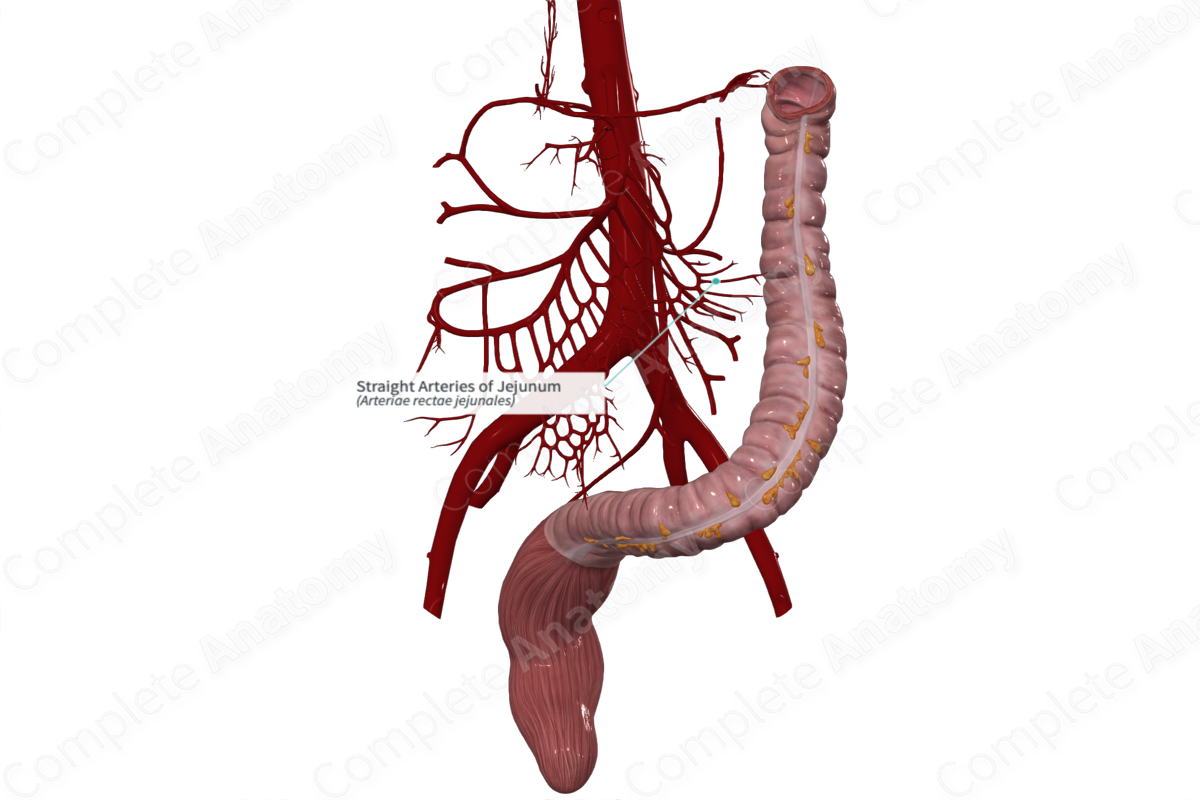
Quick Facts
Origin: Distal continuations of the jejunal arteries.
Course: Pass straight, nearly parallel to each other, between the layers of the mesentery to the jejunum.
Branches: None.
Supplied Structures: Jejunum.
Origin
The straight arteries, or vasa recta, are the distal continuations of the jejunal arteries that emerge from tiers of highly interconnected arterial arcades.
Course
The jejunal straight arteries pass nearly parallel to each other between the layers of the mesentery. They are relatively long compared to other small intestinal straight arteries, and seldom interconnected.
Branches
There are no named branches. Close to the organ, the straight arteries alternately pass on either side of the jejunum. This arrangement of the terminal ends of the straight arteries allows for distinct “layers” of vessels separated by a relatively avascular “surgical plane” through which the surgeon can gain access to the small intestine from the mesenteric side. They terminate in a rich submucosal arterial plexus.
Supplied Structures
The straight arteries supply the jejunum and all of its layers (serosal, muscular, and mucosal).
List of Clinical Correlates
- Ischemia
Learn more about this topic from other Elsevier products




